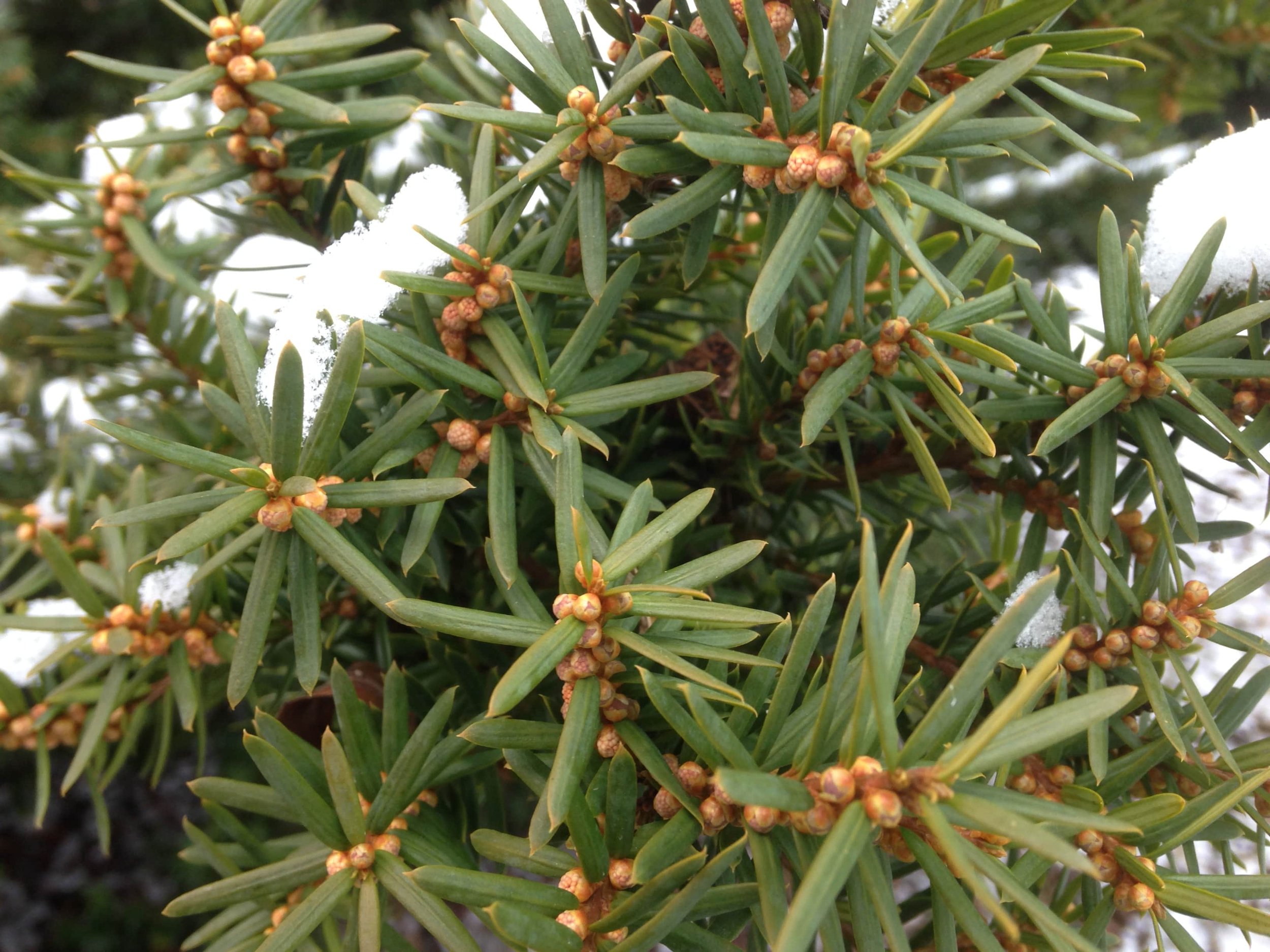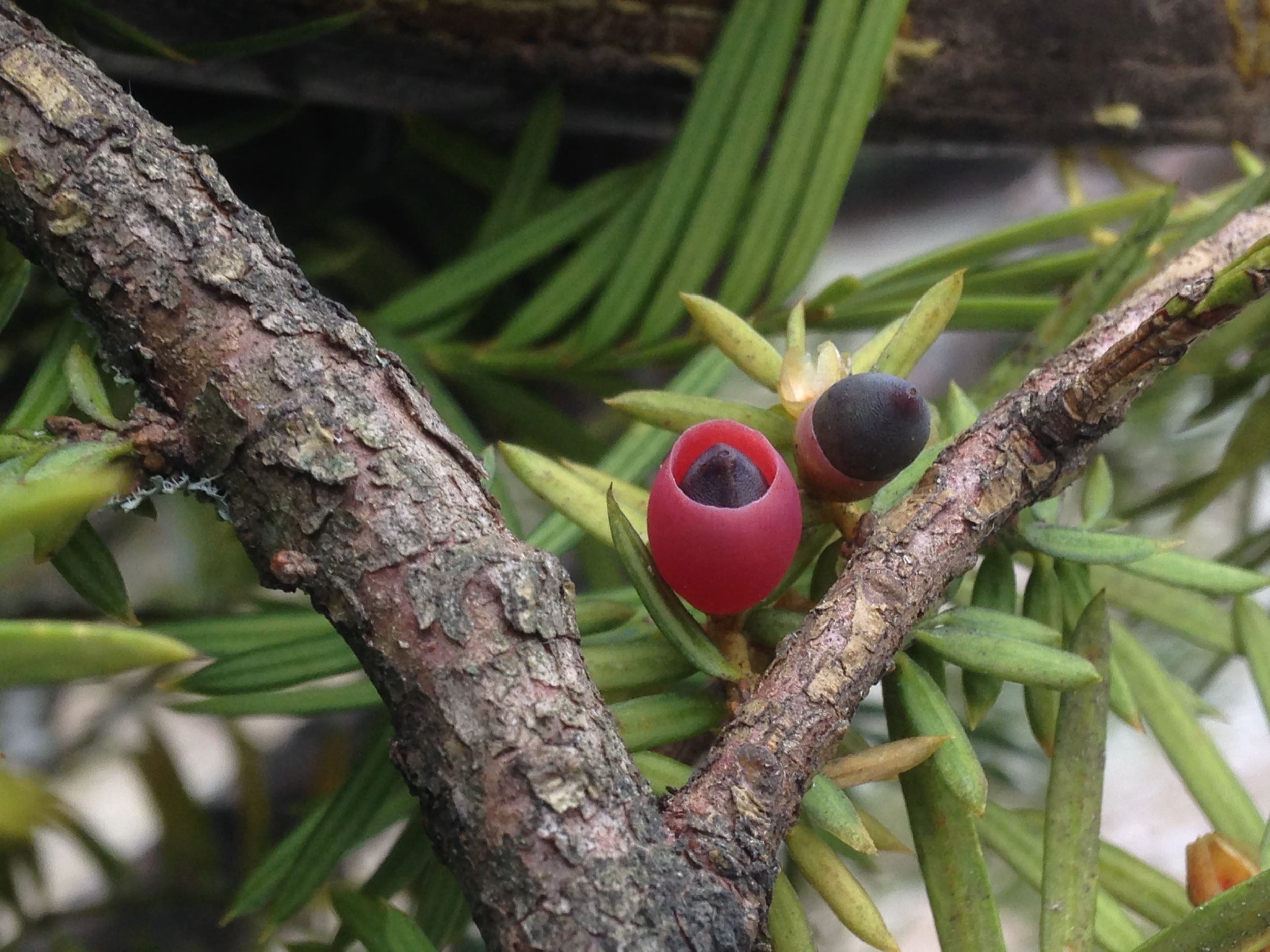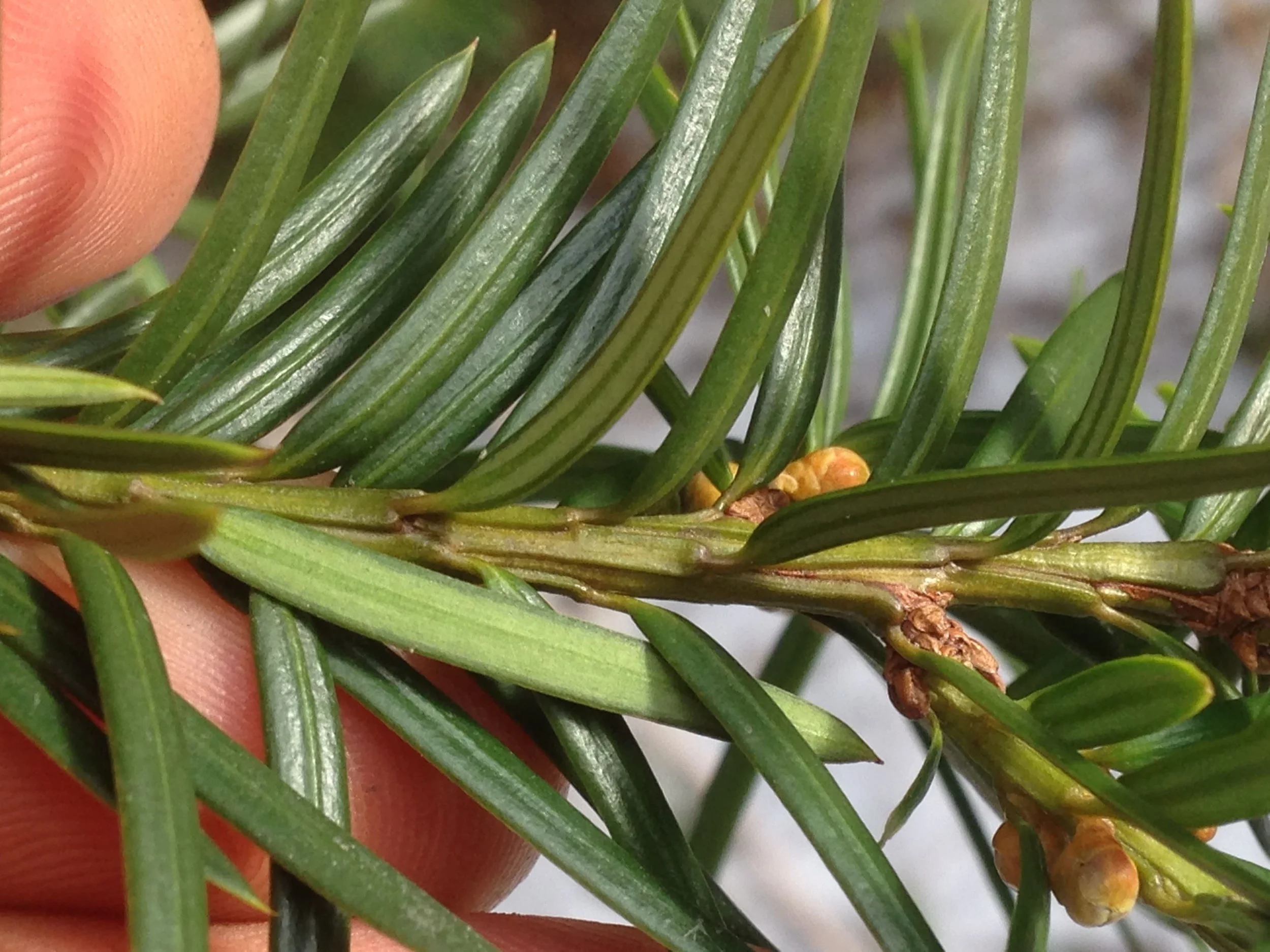Death and Taxus?
Taxus cuspidata var. ‘Nana’ photographed within the dwarf conifer collection at the University of Guelph Arboretum, 2022.12.02.
Yew (Taxus spp.) with a focus on Canada Yew (T. canadensis)
Kingdom : Plantae
Clade : Tracheophytes
Clade : Gymnosperms
Division : Pinophyta
Class : Pinopsida
Order : Cupressales
Family : Taxaceae
Genus : Taxus
Description below is for Taxus canadensis, or Canada Yew. Other common names include Ground Hemlock, American Yew, Eastern Yew.
Needle length : 1.5 - 3 cm L x 20 - 33 mm W
Needles : flat, stalked, 1.5 - 3 cm long, glossy dark green and may appear more reddish in Winter. Leaves terminating with a minute sharp point at the tip (mucronate). May be confused with Eastern Hemlock (Tsuga canadensis) or Fir (Picea spp.) but these latter two species lack the mucronate leaf tips.
Bark : Thin, scaley, brown-reddish bark.
Cone length : Pollen cones : 3 - 5 mm in diameter.
Seed : Seed enclosed within a fleshy red edible cup-shaped fruit (aril) which an opening at the end exposing the toxic seed within. The aril, formed by two fused, modified scale leaves, is about 1 cm in diameter.
Habitat : Grows in the understories of rich, shady, damp/wet woods and thickets, bogs and coniferous forests, though well drained. Think cool places. May be worthwhile looking for Canada Yew on North facing slopes and ravines. Found with overstory of Sugar Maples (Acer saccharum), Yellow Birch (Betula alleghaniensis), and Red Oak (Quercus rubra). Some Yew species and cultivars are also planted as an ornamental though not much for T. canadensis.
Habit : Often prostrate, the low sprawling branching form can create dense clusters. The low lying leader branches can root when in contact with the ground. Much more low and sprawling compared to other Yews. Most often produce seed and pollen cones on different trees (dioecious), though some individual plants have been found with both seed and pollen cones (monoecious).
Now that I have described what the Canada Yew looks like, it’s going to get a little more complicated. When I started writing this I assumed all Yew species were toxic and, from what I am reading in the literature, it seems a few other authors think the same thing. But I have only found one paper which described poisoning from Canada Yew, Taxus canadensis, but they description is a best poor, and, with a less generous reading, inaccurate so I can’t be certain it is in fact Taxus canadensis. So, going forward, I will present the information on toxicity in Yew species (Taxus spp.) in regards to the other Yews which are commonly planted as ornamentals and may be found as “escapees” in other landscapes.
Other Yews (Taxus spp.) are the only poisonous conifers in Southern Ontario. The description of the Canada Yew above is still relevant, but does not cover the growth habits of other Yew species.
Aril of Taxus cuspidata photographed within the dwarf conifer collection at the University of Guelph Arboretum, 2022.12.02.
Focus :
Taxines, the active toxic alkaloids found in the branches, leaves, buds, and seeds of most Yews, inhibit normal sodium and calcium exchange across myocardial (heart muscle) cells, depressing electrical conduction across the heart. This can slow the heart (bradycardia), make the heart beat more irregularly (arrhythmia) or even stop the heart (death) if any is ingested. Taxines are also vasodilators which lowers the blood pressure (hypotension). Slow to no heartbeat with low blood pressure can be a bad scene. Most papers I have come across noted highest taxine concentrations found in the plant in January, yet toxins persist throughout the year. Leaves and seeds are often described as being the most toxic parts of the plants. Taxines were once thought to be a single compound, but are now considered to be many different alkaloids.
From the article “Dangers of Yew Ingestion” from SEPTEMBER 2005 issue of Veterinary Medicine :
The amount of plant material required to obtain a lethal dose is quite small: The LDmin [minimum lethal dose] in dogs is about 2.3 g of leaves/kg, or about 11.5 mg/kg of taxine alkaloids. So a dog could consume a potentially lethal dose while playing with Taxus species branches or sticks. Since cases have been recorded in which horses have collapsed within 15 minutes of consuming Taxus species, absorption of ingested taxine alkaloids in monogastric animals is rapid.
The OMAFRA (Ontario Ministry of Agriculture, Food and Rural Affairs) article “Yew Poisoning in Horses and Ruminants” says that “for a 454-kg (1,000-lb) horse, as little as 227 g (0.5 lb) of yew needles could be fatal.” which really points to how powerful the Yews can be, though they do not indicate which Yew species these numbers refer to.
In the book “Plants Poisonous to Livestock” by Harold C. Long, the process, from ingestion to death is described with detail explaining what the symptoms look like when ingesting small amounts, larger but not lethal, and then deadly amounts.
When small amounts of Yew are ingested there may be signs of excitement, and a slight rise in temperature. Consumption of larger but not fatal amounts can present with more pronounced excitements, nausea and vomiting, slowing of respiration and circulation, and diminished senses. The author describes that the temperatures lower and the extremities get cool. The poisoned animals head hangs, they may belch and the belly may swell. Some animals may lie down, while others may just stand, nearly motionless.
With fatal quantities the foregoing symptoms may be followed by coma, with death in two hours or more after the poisoning, but more generally and usually in horses, asses, and mules (but also in cattle) there is no period of coma, the excitement is less pronounced and often unobserved, and death appears very sudden. The animals stop, shake their heads, respiration is modified, there is falling, and death (sometimes with convulsions) results from cessation of the heart’s action (Cornevin)
- from Plants Poisonous to Livestock by Harold C. Long
Likely a volunteer Taxus sp. photographed by potting site at the University of Guelph Arboretum, 2022.12.02.
While toxic for many domestic animals such as Horses (Equus ferus caballus), Pigs (Sus scrofa domesticus), Donkeys (Equus asinus), and Cattle (Bos taurus), Yew is a common food source for White-tailed Deer (Odocoileus viriginiana) and Moose (Alces alces) to the point where one paper noted that the increase in White-tailed herbivory may lead to extirpation of T. canadensis from some areas. Some papers indicate that rumen fluid in wild White-tails as being fundamental in breaking down taxine A. But, I have also read, and included below, other articles where many ungulates have been reported to have died from Yew ingestion. So I wonder, both what it is that is breaking down the taxines in the ungulate digestion, and if some individuals lack that substance/process in their digestive system that breaks down the taxines. If some are surviving and some aren’t then something is up.
I did carefully peel away the aril from one of the Japanese Yews (T. cuspidata) I encountered at the Arboretum and ate it. It was lightly sweet, fresh and fruity tasting, raspberry-like but without the tartness. I enjoyed it and will likely make my way back again in the future to try some more. How strange to find such a beautiful flavour on a toxic plant. Reminds me of the first time I tried a Mayapple (Podophyllum peltatum) fruit I found on my way to Hamilton. It too was sweet and delicious while the remainder of the plant is toxic (though not as deadly as Yew).
I have also been on the search for Canada Yew in my area to get to know and to photograph, but have yet to find any plants. There have been misidentifications on inaturalist.org which I have gone to check out, only to challenge the i.d. in the end. There have been many individuals planted ornamentally in my neighbourhood which look like Taxus cuspidata (Japanese Yew), but that’s not really who I am in search of. The species in all of the photos are Taxus × media which translates to “intermediate Yew” and means that the plants pictured are hybrids of English yew (Taxus baccata) and Japanese yew (Taxus cuspidata).
Update : I got an email recently from someone I know in town went on a walk and found Canada Yew and wrote to give me instructions on where to find it. I drove out the next day and found the plant she was telling me about and it was truly a Canada Yew. I was very very excited.
Here are some photographs.
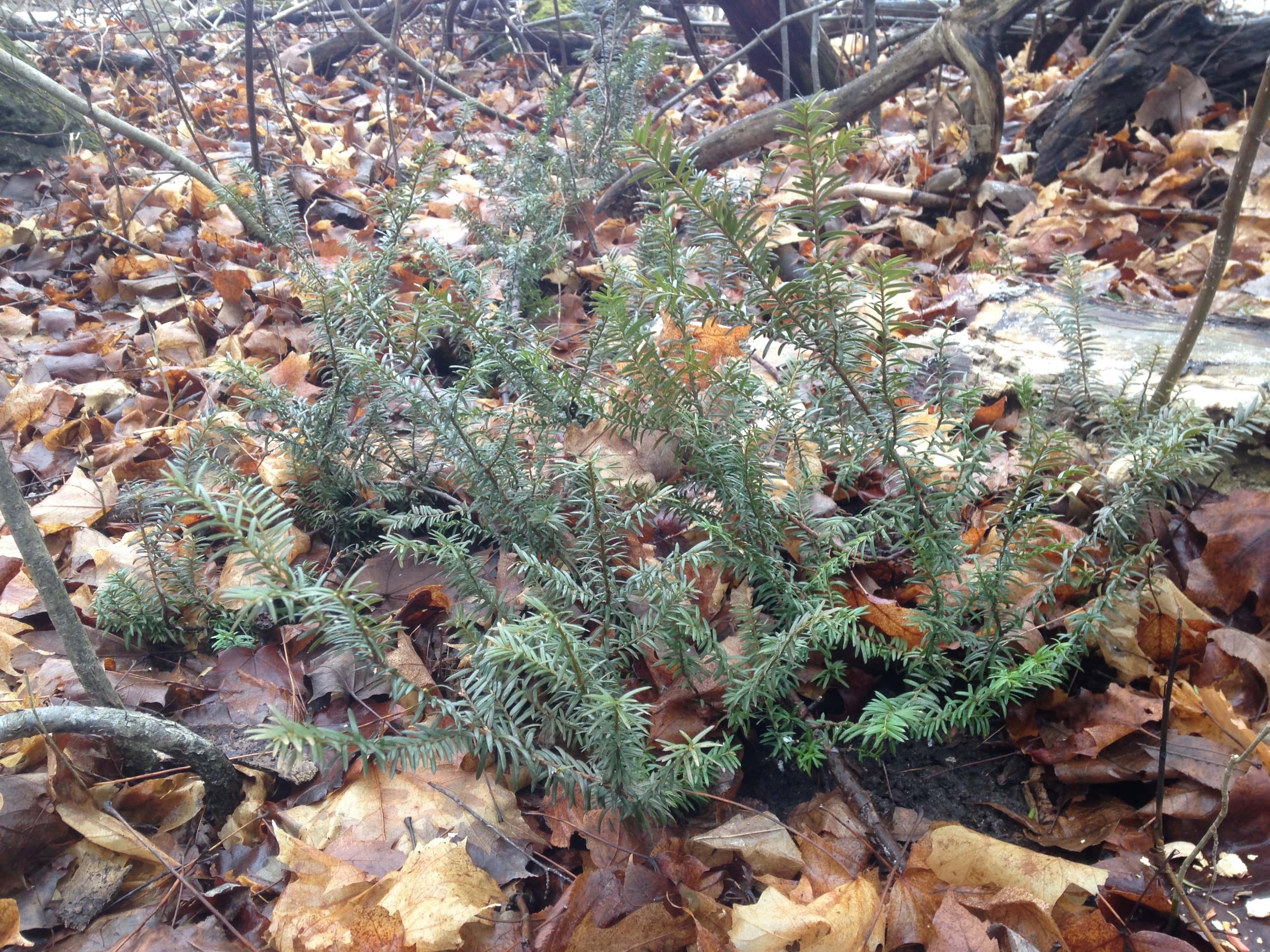
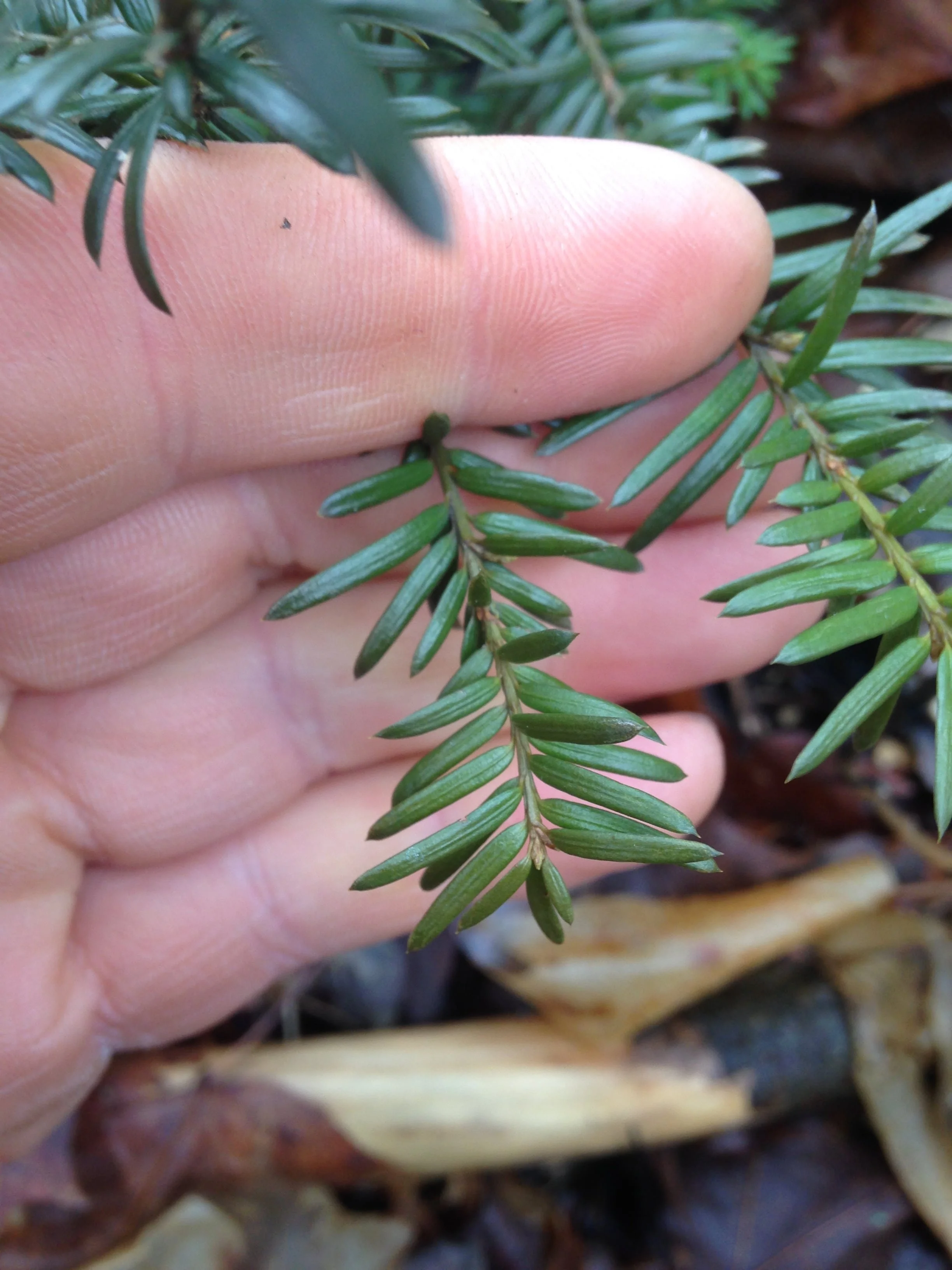
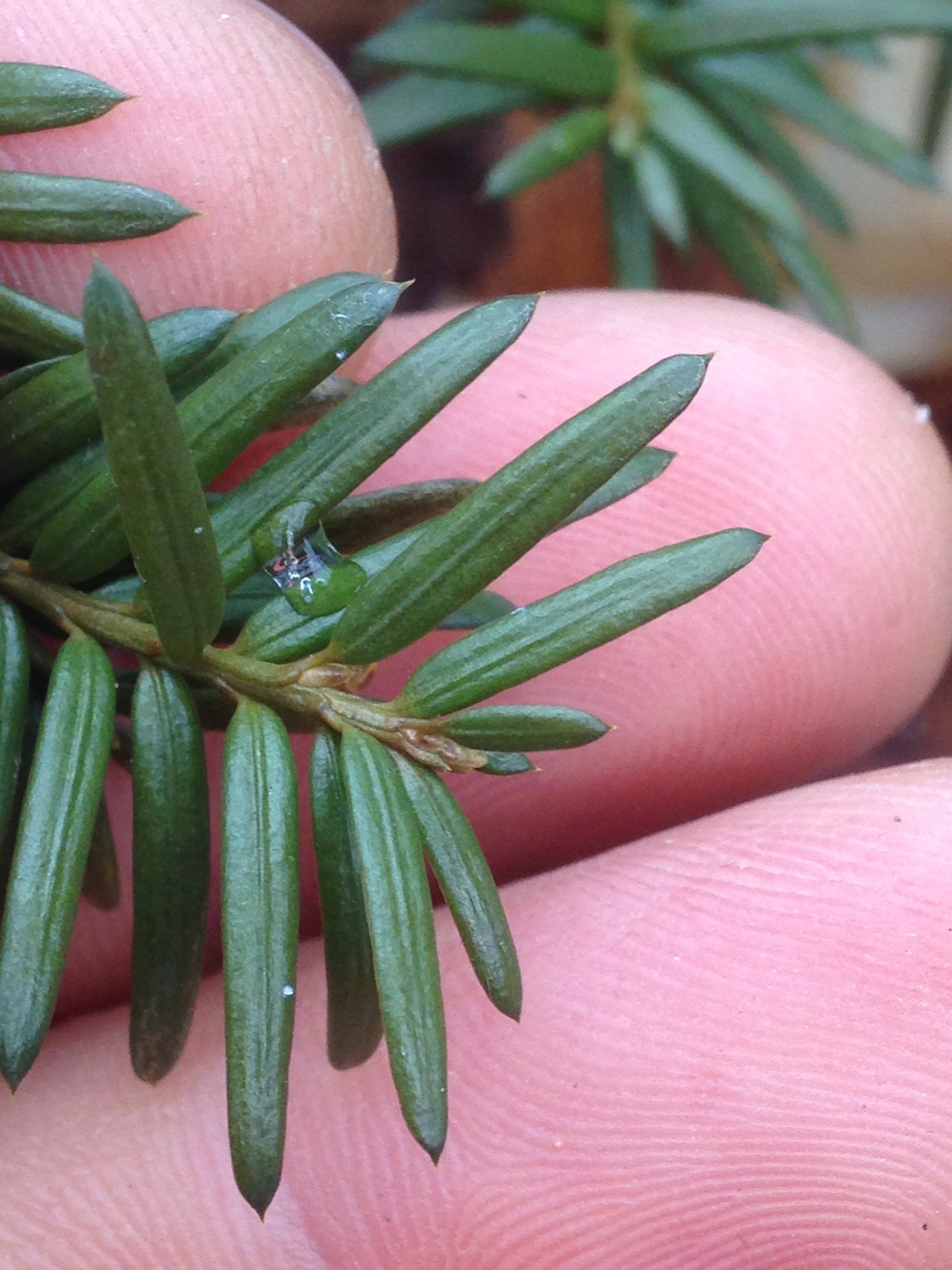
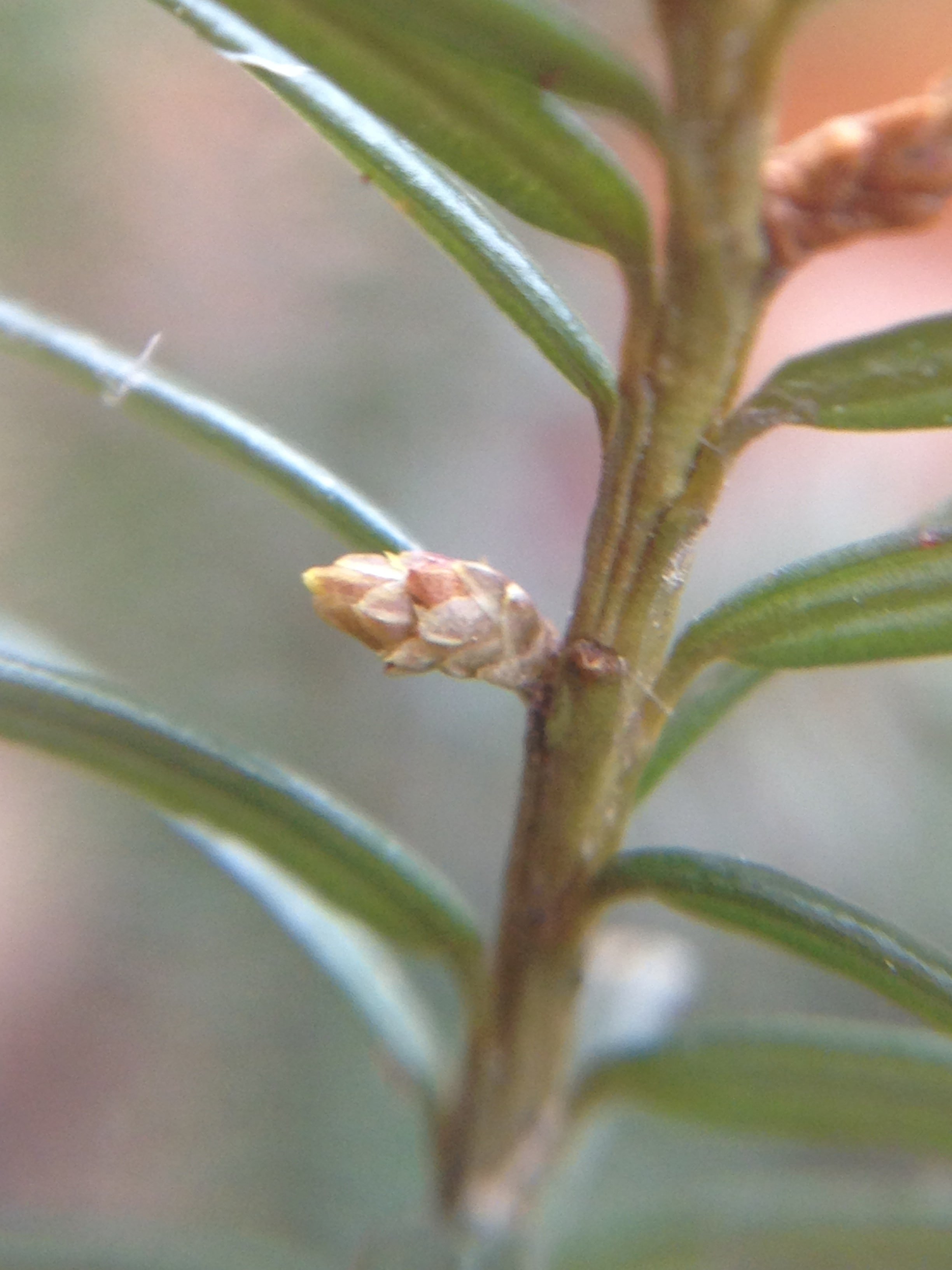
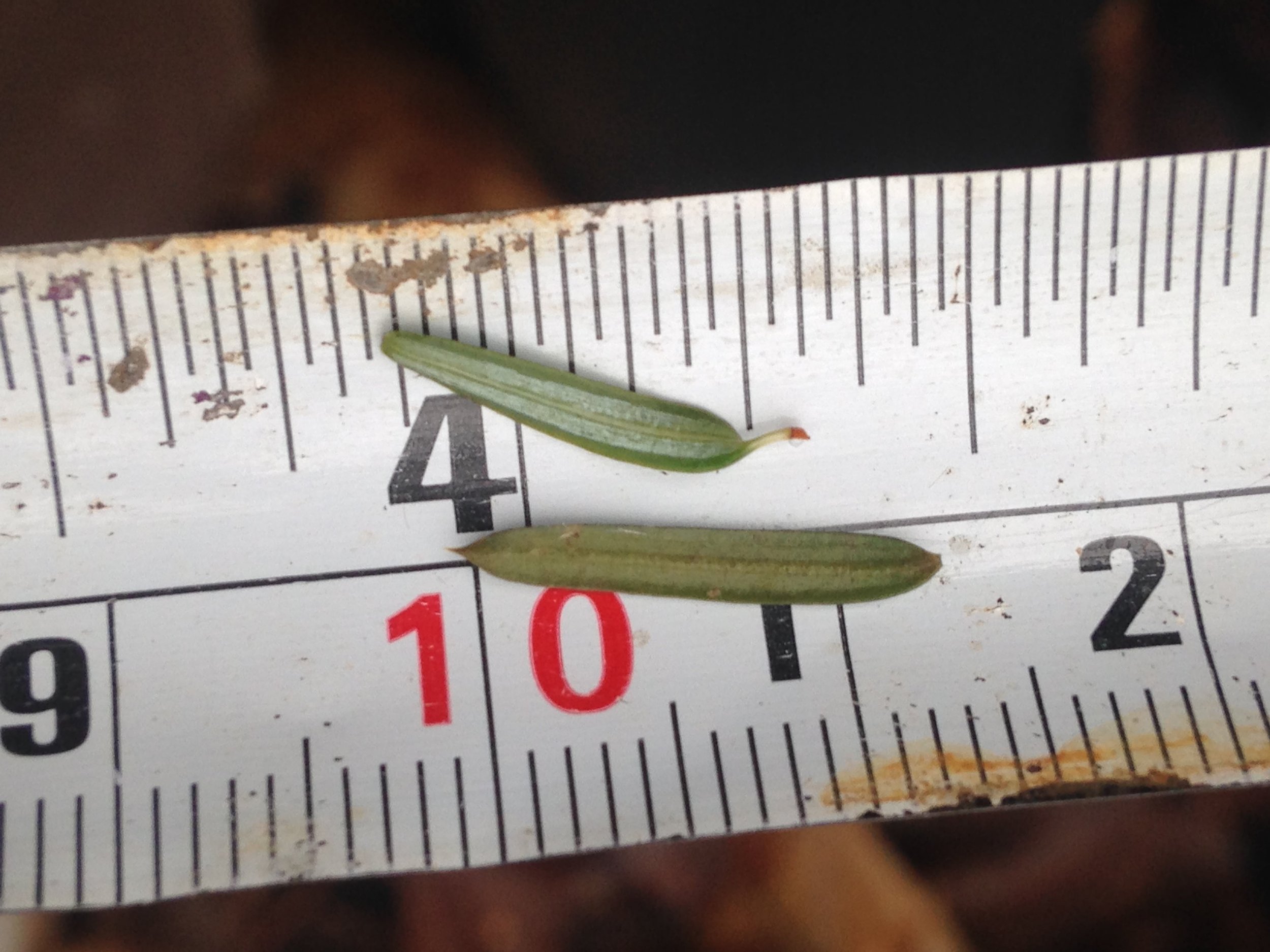
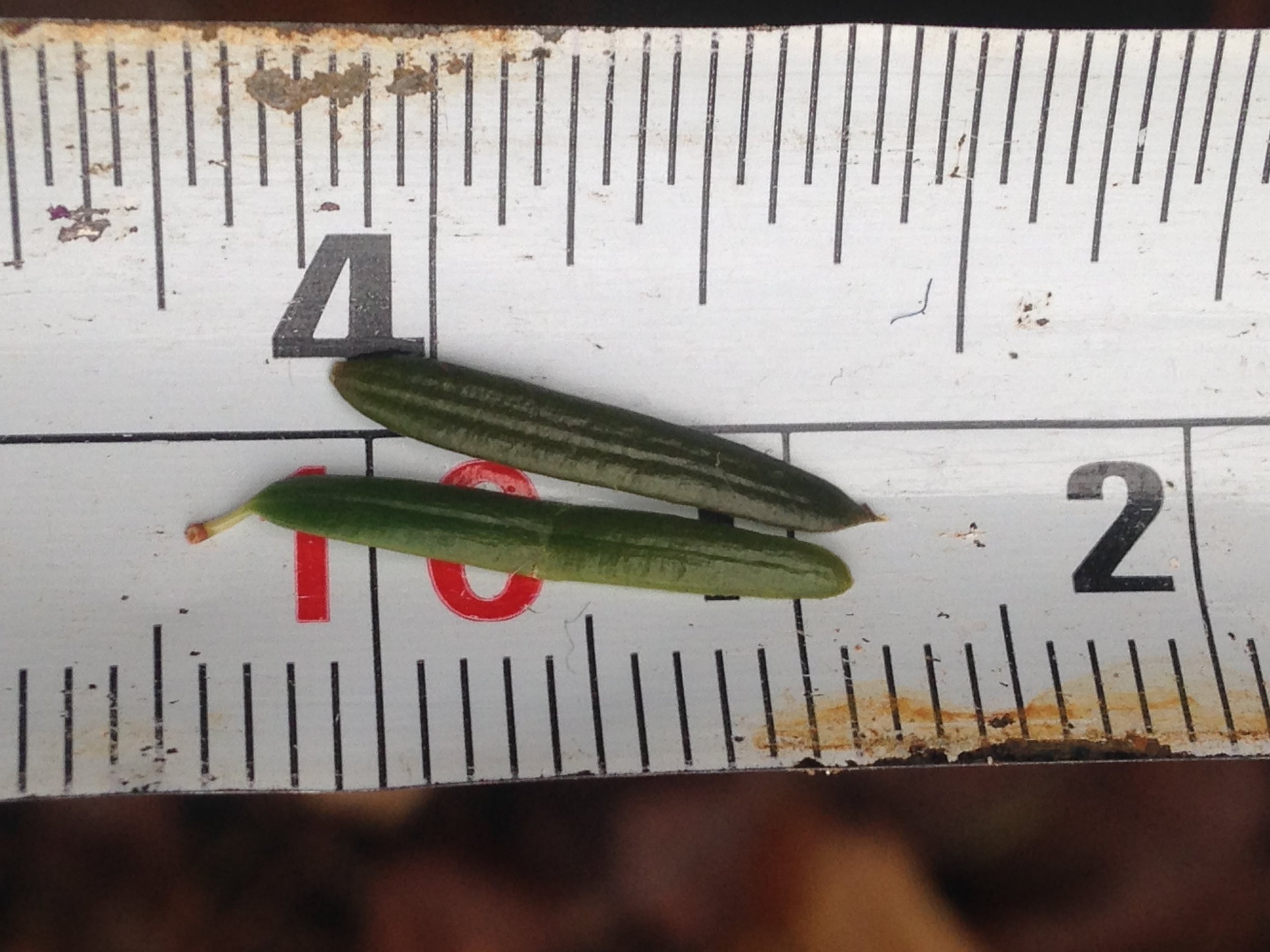
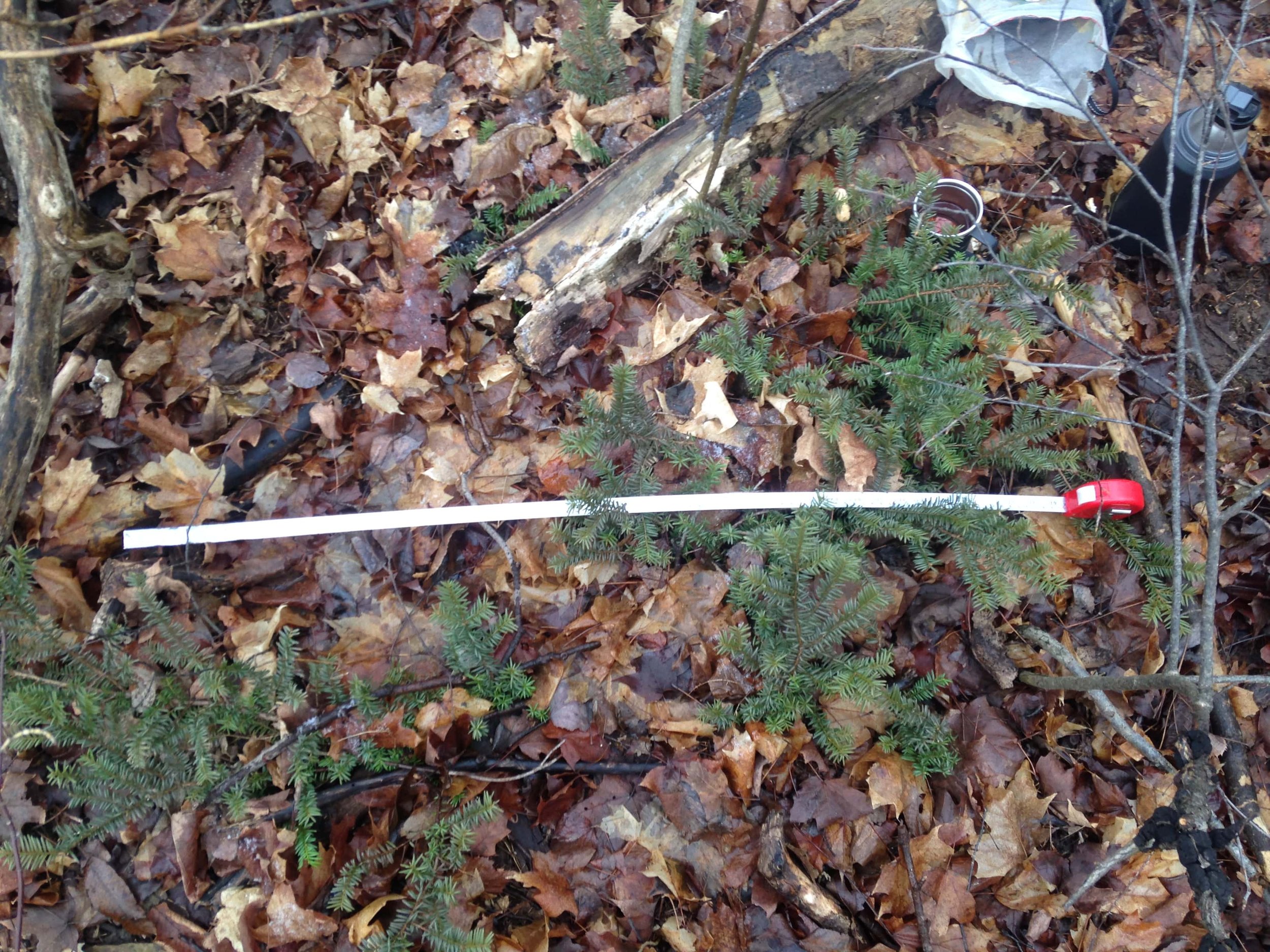
To learn more :
Shrubs of Ontario by James H. Soper and Margaret L. Heimburger, ROM Publications , 1982.
The ecology of Canada Yew (Taxus canadensis Marsh.): A review
Taxine alkaloids article on Wikipedia
Dangers of Yew Ingestion pdf
OMAFRA (Ontario Ministry of Agriculture, Food and Rural Affairs) article “Yew Poisoning in Horses and Ruminants”
Plants Poisonous to Livestock by Harold C. Long
Incubation of European yew (Taxus baccata) with white-tailed deer (Odocoileus virginianus) rumen fluid reduces taxine A concentrations.
Popular landscaping bush has killed dozens of big-game animals in the Treasure Valley from Idaho Statesman
Thinking like a Yew video on youtube, segment on Canada Yew

